Childerley, also known as Great Childerley and Little Childerly, was a small rural village in the county of Cambridgeshire in the East of England, United Kingdom. The population is included in the civil parish of Caldecote.
Childerley, also known as Great Childerley and Little Childerly, was a small rural village in the county of Cambridgeshire in the East of England, United Kingdom. The population is included in the civil parish of Caldecote.
Childerley is mentioned in the Domesday Book of 1086. Childerley Hall was built by Sir John Cutts after clearing and depopulating the two existing villages of Great Childerley and Little Childerley. [1] There were originally two churches in Childerley, one of which was dedicated to St Mary. Both were demolished by Sir John Cutts. [2] Queen Elizabeth I is recorded [3] as having sent the Spanish Ambassador to stay with Sir John Cutts at the Hall.
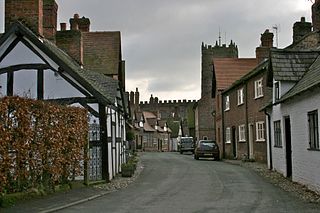
Great Budworth is a village and civil parish in Cheshire, England, four miles (6.4 km) north of Northwich off the A559 road, east of Comberbach, northwest of Higher Marston and southeast of Budworth Heath. Until 1948, Great Budworth was part of the Arley Hall estate.

Oakham is the county town of Rutland in the East Midlands of England, 25 miles (40.2 km) east of Leicester, 28 miles (45.1 km) south-east of Nottingham and 23 miles (37.0 km) west of Peterborough. It had a population of 10,922 in the 2011 census, estimated at 11,191 in 2019. Oakham is to the west of Rutland Water, one of Europe's largest man-made lakes, and in the Vale of Catmose. Its height above sea level ranges from 325 ft (99 m) to 400 ft (120 m).
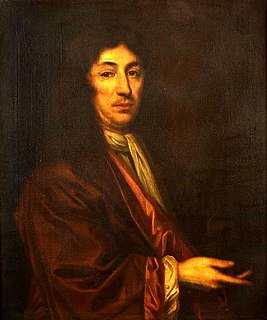
Joseph Dudley was a colonial administrator, a native of Roxbury in Massachusetts Bay Colony, and the son of one of its founders. He had a leading role in the administration of the Dominion of New England (1686–1689) which was overthrown in the 1689 Boston revolt. He served briefly on the council of the Province of New York where he oversaw the trial which convicted Jacob Leisler, the ringleader of Leisler's Rebellion. He then spent eight years in England in the 1690s as Lieutenant-Governor of the Isle of Wight, including one year as a Member of Parliament for Newtown. In 1702, he returned to New England after being appointed governor of the Province of Massachusetts Bay and Province of New Hampshire, posts that he held until 1715.
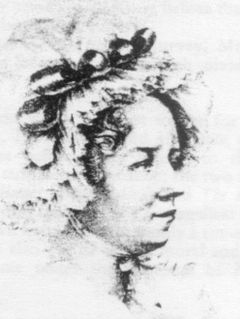
Mary Martha Sherwood was a 19th-century English children's writer of over 400 works. The best known include The History of Little Henry and his Bearer (1814), The History of Henry Milner (1822–1837), and The History of the Fairchild Family (1818–1847). Her evangelicalism permeated her early writings, but later works cover common Victorian themes such as domesticity. She married Captain Henry Sherwood and moved to India, converted to evangelical Christianity and began to write for children, with those of military encampments there in mind, but her work was well received in Britain, where the Sherwoods returned after a decade. She opened a boarding school and published texts for children and the poor, as "one of the most significant authors of children's literature of the nineteenth century". Her depictions of domesticity and ties with India may have influenced many young readers, but her work fell from favour as children's literature broadened in the late 19th century.
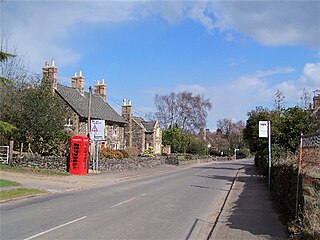
Swithland is a linear village in the Charnwood borough of Leicestershire, England. The civil parish population was put at 230 in 2004 and 217 in the 2011 census. It is in the old Charnwood Forest, between Cropston, Woodhouse and Woodhouse Eaves. It has a village hall, a parish church and a public house, the Griffin Inn. The village is known for the slate that was quarried in the area.

Lieutenant-General John Cutts, 1st Baron Cutts, PC (Ire), was a British soldier and author.
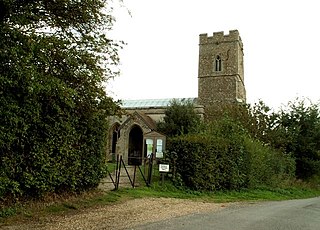
Barnardiston is a village and civil parish in the West Suffolk district of Suffolk, England. The village is located about four miles north-east of Haverhill off the A143.
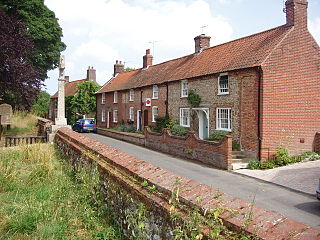
Great Snoring is a rural village in North Norfolk by the River Stiffkey, in the east of England. It is situated approximately 25 miles (40 km) north-west from the city and county town of Norwich, and 2 miles (3 km) north from the larger village of Little Snoring.
Essex was a constituency represented in the House of Commons of the Parliament of the United Kingdom from 1290 until 1832. It elected two MPs, traditionally referred to as Knights of the Shire, to the House of Commons. It was divided into two single member constituencies in the Great Reform Act.

Great Bealings is a small village in Suffolk, England. It has about 302 people living in it in around 113 households. Its nearest towns are Ipswich and Woodbridge. Nearby villages include Little Bealings, Playford, Culpho, Hasketon and Grundisburgh. The village does not have an obvious centre, and the population is split between two areas — one around Lower Street to the East of the village, and the other at Boot Street/Grundisburgh Road to the West of the village. St Mary's, the village church, is about in the middle of these two centres of population.
This is an incompletelist of Sheriffs of Cambridgeshire and Huntingdonshire in England from 1154 until the abolition of the office in 1965.

Little Cressingham lies 2.5 miles (4.0 km) south east by road from Great Cressingham, 3 miles (4.8 km) west of Watton and 8 miles (13 km) south of Swaffham in the Breckland District of Norfolk. It covers an area of 11.90 km2 (4.59 sq mi) and had a population of 157 in 70 households at the 2001 census It is in the civil parish of Great Cressingham. The village is located on the edge of the Stanford Battle Area.
Sir John Hynde was an English judge, prominent in the reign of Henry VIII.
Sir John Cutts was an English politician who sat in the House of Commons variously between 1604 and 1640.

Gautby is a village in the East Lindsey district of Lincolnshire, England. The village is situated 6 miles (10 km) north-west from the town of Horncastle, and is part of the Minting civil parish.
The Cutts Baronetcy, of Childerley in the County of Cambridge, was a title in the Baronetage of England. It was created on 21 June 1660 for John Cutts. The title became extinct on his death in 1670. The Cutts estates devolved on his kinsman and namesake John Cutts, who was elevated to the peerage as Baron Cutts in 1690.
Sir John Cutts (1545–1615), of Horham Hall, Essex; Shenley Hall, Hertfordshire and Childerley, Cambridgeshire, was an English politician.
John Hore, of Great Childerley, Cambridgeshire and Great Raveley, Huntingdonshire, was an English politician.

Sir Francis Hynde, of Madingley, Cambridgeshire and Aldgate, London, was an English politician and landowner particularly associated with the development of Madingley Hall and its manorial estates.
Cutts Barton, (1706–1780) D.D. was an English cleric, Dean of Bristol from 1763 to 1780.
![]() Media related to Childerley at Wikimedia Commons
Media related to Childerley at Wikimedia Commons